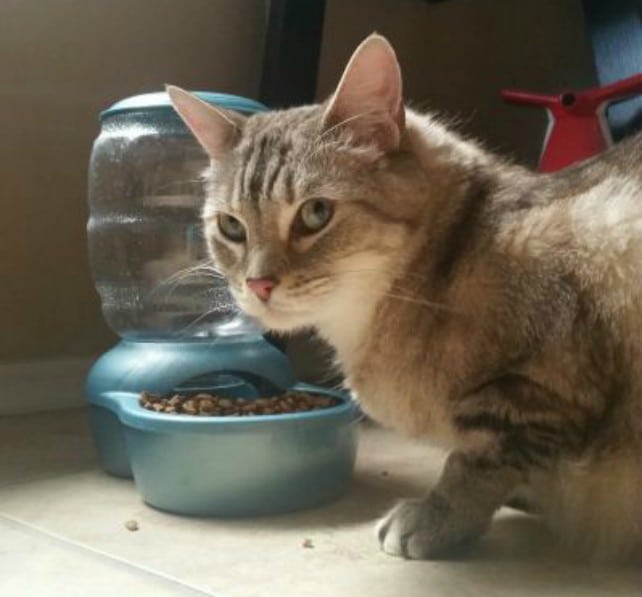Many new amputee cats and dogs will have a weak appetite after surgery. If your Trikitty doesn’t want to eat, don’t panic. You can do a few things to boost appetite, from adding food toppers to making a liquid gruel diet to syringe feeding. Here are some tips to get started.
First, Encourage Food Intake

Serve a warm meal. Your cat may enjoy a warm meal for a change. Some people say don’t put cat food in the microwave, others feel it’s perfectly OK to heat it for 10 seconds or so. If you don’t want to nuke it, just add a tablespoon of warm water to bring it up to body temperature.

Feed on paper plates. If your cat rejected food after you mixed medication into their meal, they can probably smell the residue in the bowl even after you washed it. Reduce the chance your cat will reject food by using paper plates at each serving, so they aren’t reminded of the taste.
Ask your vet for an appetite stimulant. If your cat still won’t eat, prescriptions can be written for medications like Mirtazapine, an anti-depressant for humans that’s been shown to have appetite-stimulant properties in cats. Another option is Cyproheptadine, an antihistamine that also promotes eating. Ask your vet for a transdermal version that can be applied to the inner ear.
Tips to Syringe Feed Tripawd Cats
Keep your vet informed about your cat’s lack of appetite. The vet may want to prescribe a diet to boost appetite and increase nutrition uptake. Getting your cat to eat it may be a challenge but it’s not impossible. Here are two expert tips to get your recovering Tripawd eating.
First, make a gruel with canned food.
Next, follow the instructions of feline veterinarian Dr. Sally Foote. She offers these excellent tips to get even the grumpiest cat eating:
If possible, get a friend to help gently hold your cat in place.
Have a paper towel ready, it makes an excellent bib.
Allow your cat to express himself, don’t panic.
Use a 3cc syringe, the perfect size for a cat’s mouth.
Fill the syringe 1/4 of a millileter at a time with the gruel.
Come in from behind the cat’s head. Don’t touch the face and keep your fingers away from the mouth as much as possible.
Place the tip of the syringe in a corner of the mouth. Slowly depress and allow your cat to eat.
Feed a little at a time, don’t force it and be patient.
If you have tips to share about getting cats to eat after surgery, share them with us in the comments, we’d love to learn from your experience!